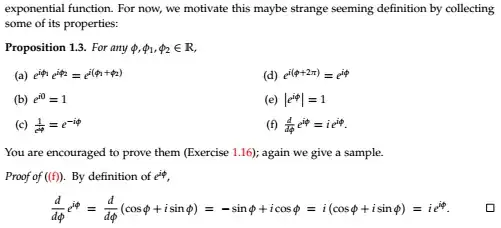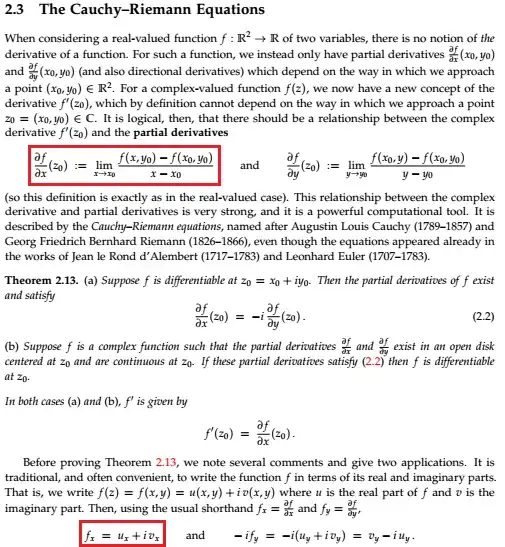Definition of $e^{i \theta}$ (or cis in other texts)
About Prop 1.3f, how is it possible to discuss derivative of $e^{i \theta}$ before both defining derivatives of complex functions (Ch2) (including functions of a real variable I think!) and defining the complex exponential (Ch3)?
In particular, the proof of Prop 1.3f seems to assume linearity of the derivatives of complex functions.
There's even this exercise later on: Exer 1.6b
I know how to do this with Ch3's definition of the complex exponential. I don't believe this is possible to do with only Ch1 even if we write $e^{\phi + i\phi} = e^{(i+1)\phi}$.




